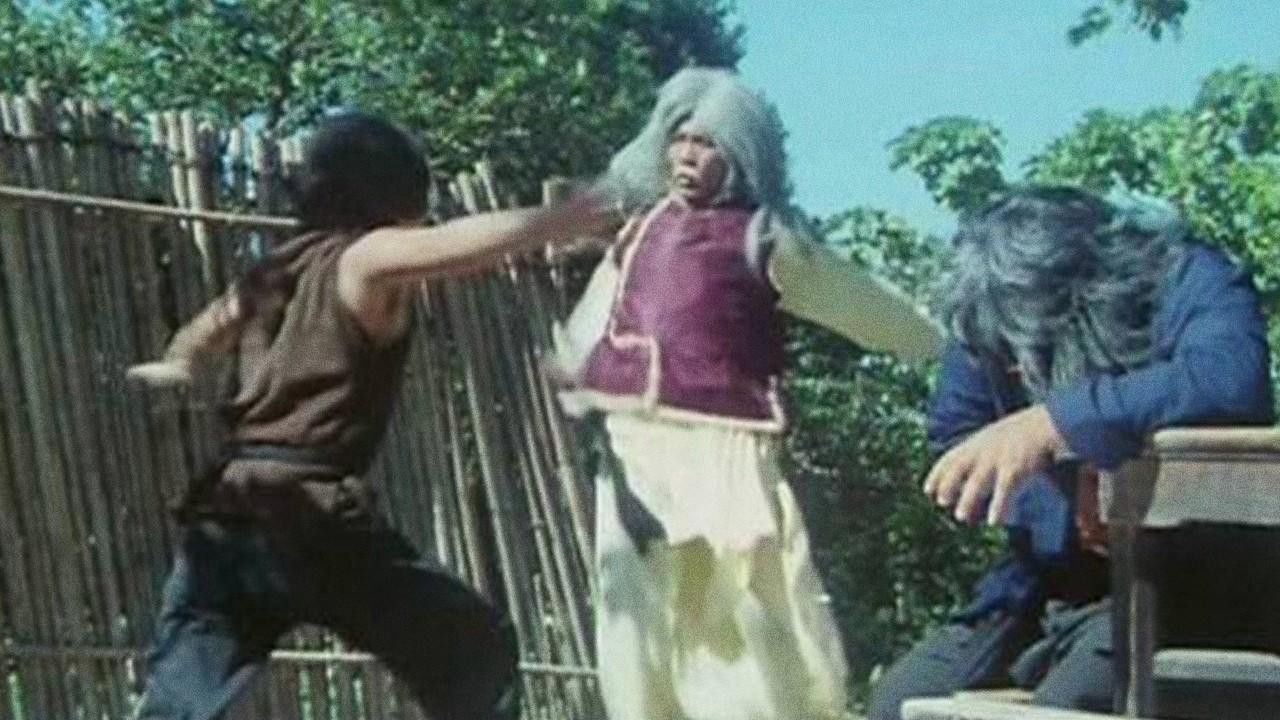The 36 Deadly Styles (Joseph Kuo, 1979)

There was a weird cutaway scene early in Joseph Kuo’s 7 Grandmasters that struck me as a mistake, a bit of the story thrown into the middle of another storyline, the context and meaning of which wouldn’t become clear until much later in the film. It was jarring and weird, something that a more professional production would have smoothed out, either with some more exposition or repositioning it as a narrated flashback later in the film or something like that. After watching The 36 Deadly Styles though I’m beginning to suspect that Kuo put that scene where he did, in the manner he did, specifically because of its disorienting effect. Because The 36 Deadly Styles is completely structured around scenes like that, the apparent purpose of which is to express the pointlessness of kung fu movie revenge stories.
The film begins in the middle of its story, and in the middle of a fight. We don’t know who is fighting or why, but can only assume that the guy with the grotesque nose is the villain. He and his gang are beating up another pair of guys, one older, one younger. They flee to a temple, where a lay monk rescues them, though the older one dies. The younger, Wai Chi (a Jackie Chan type played by Nick Cheung Lik), hangs around the temple, bullies some young monks, flirtatiously fights with a pretty milk seller (Jeannie Chang), and is repeatedly spotted by the red-nosed guy who’s trying to kill him. That guy calls in his older brothers, each of whom sport outrageous wigs for some unexplained reason (poor Bolo Yeung) and mayhem ensues.
Parallel to this are scenes of Hwang Jang-lee, Korean Tae Kwon Do master and kung fu movie supervillain, marching through fields mortally injuring guys left and right. Some of these are flashbacks (both the lay monk and the milk seller’s father suffer from the lifelong aftereffect of his blows) and some are in the present. I think. It’s never really clear. By the time the movie reaches its climax, we learn that Hwang is the leader of the wig gang, and he’s seeking revenge on the rival gang that killed his brother, most of whom he’s killed, but for the monk and the milkman. And Wai Chi, who was a toddler at the time of the initial showdown, where Hwang killed his father. Somewhere around this time we also get the scene of Hwang’s brother (maybe? imdb credits him as “Ghost Face Killer”, which is a character from a previous Joseph Kuo film, The Mystery of Chess Boxing. And speaking of the Wu-Tang Clan, one character calls the monk an “old dirty bastard”) fighting another guy over the secret of a book called The 36 Deadly Styles, which the guy claims to have burned without reading. It’s unclear if these two plots are related, or if so, how. There was a scene early in the film where an old master sent somebody after a guy who’d fled to Tibet for some reason. That might have been the Ghost Face Killer going after the thief, or maybe not.
Watching the movie again would probably clear it up, but I don’t want to do that right now, because I think the movie works better not knowing how it fits together. I suspect that if Kuo really wanted us to follow the plot and the characters super-closely, he would have given us more information, or repeated exposition in the ways Hollywood does. He could have done that, but he didn’t. I think because what all these discordances and digressions and weird breaks and unfathomable characters make clear is how pointless these kinds of revenge plots really are. Wai Chi has no idea who any of the people attacking him are, or who his father and his friends were, or why they initially got attacked some 15–20 years earlier. It’s literally pointless, but he’s doomed to go through the motions of the standard kung fu movie plot (escape, punishment, healing, training, victory) whether he likes it or not. Maybe this is accidental, a by-product of quick and cheap production and shoddy quality control, but the cool thing is it doesn’t matter. The meaning is the ultimately the same. And if anything the film’s limitations make it more effective at conveying the circular meaninglessness of violence than much greater films like, say, 8 Diagram Pole Fighter or Golden Swallow or Last Hurrah for Chivalry, which find a kind of beauty and honor in sacrifice for the sake of a code. Everything about The 36 Deadly Styles is ugly and there’s no talk of abstract codes or moral or religious ideals nor any honor to be found in fighting. There’s just fear and pain.
